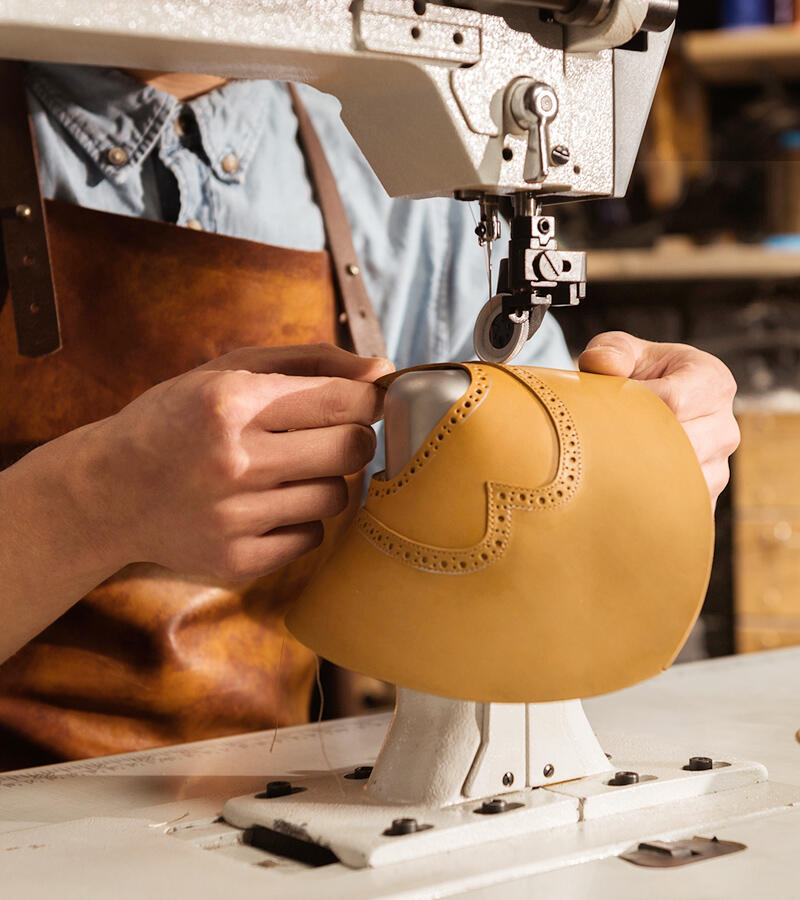- Home
- TPU Fabric
TPU Fabric
01
What is TPU?
TPU (Thermoplastic Polyurethane) is a high-performing, eco-friendly polymer material. It is a linear segmented block copolymer made from polyethers or polyesters with polyurethanes. TPU can be reshaped using heat and processed through methods like extrusion, calendering, and injection molding. TPU scrap is recyclable.
A WIDE RANGE OF TPUs
Can be manufactured by adjusting the reacting compounds' ratio, structure, and/or molecular weight. This adaptability allows the polymer's structure to be tailored to achieve specific final material properties. Leather made by TPU is both biodegradable and waterproof. It is very elastic, low-temperature resistant, flexible over a wide temperature range, and non-toxic, so it does not harm the skin when in contact with it.
Softness
- 85 Shore A
- 65 Shore A
Hydrolysis (Jungle Test)
- Polyester Type - 3 years
- Polyether Type - 10 years

Characteristics of TPU

01
Excellent Tear and Tensile Strength
TPU offers high resistance to tearing and has impressive tensile strength, ensuring durability.
02
High Elasticity
Its high elasticity makes TPU flexible, easily moldable, and able to withstand significant deformation without damage.
03
Oil Resistant
TPU is resistant to oils and other chemicals, enhancing its longevity.
04
Extreme Low Temperature Flexibility
TPU remains flexible even at very low temperatures, making it suitable for harsh environments.
05
High Flex Performance
It can endure repeated bending and flexing without losing its properties.
06
Biodegradable
TPU can biodegrade within 3 years for ester types and 10 years for ether types, making it an environmentally friendly choice.

Advantages of Choosing TPU for Textile Coating
- Lighter than PVCTPU fabrics are lighter than PVC, making products easier to carry and use.
- Easily ProcessedTPU fabrics are easy to print and weld on, allowing for versatile design options. It reduces processing time compared to the same thickness film or PU leather.
- Non-toxic & Skin ContactTPU is free from harmful chemicals, ensuring safety for users and the environment.
- Moldable (Compared to PU)TPU is more moldable than PU because of its thermoplastic properties. With higher elongation and flexibility characteristics, it can be shaped and molded with ease.
02
TPU Coated Fabric
TPU coated fabric and synthetic leather are the result of combining the TPU film and foam layer created through calendering lamination process with a chosen substrate backing fabric.
Environmental
Benefits of TPU Coated Fabric
Lower Carbon Emissions
The production of TPU emits less carbon than PVC or PU synthetic leathers, reducing environmental impact. TPU can biodegrade, reducing long-term waste.
Reduced Chemical Usage & Environment Pollution
TPU manufacturing does not use harmful chemicals, promoting a cleaner production process. TPU does not release toxins, making it safer for the environment and users.
| Hazardous Substances Comparison | Toxic Substances Added During Processing | Recycling (Burning) Produces Toxic Substances | |
| “Eco-friendly” Artificial Leather | tpu | None | None |
| pu | DMF | Hydrogen Cyanide | |
| Durable Artificial Leather | pvc | Plasticizers | Dioxin |
Applications of
TPU Coated Fabric
TPU Coated Fabric
TPU coated fabrics are used in various products due to their superior properties.

Bags

Luggage

Shoes

Medical Bedding

Motorcycle Bags
03
How is TPU Coated
Fabric Made?
Coated Fabrics
- step 01Glue ApplicationApply glue to fabric
- step 02Coating/LaminationCalender lamination
- step 03Inspection & PackagingCut to customer desired length per roll
Foamed Synthetic Leather
- step 01Glue ApplicationApply glue to fabric
- step 02Coating/LaminationCalender lamination
- step 03FoamingFoaming furnace activates foaming agent
- step 04Inspection & PackagingCut to customer desired length per roll
TPU Foam Technology Explained
TPU foam technology uses thermoplastic polyurethane to create foam materials with softness, flexibility, and resistance to abrasions and tears. It's popular in industries where comfort and toughness are important. Standard manufacturing includes mixing raw TPU with foaming agents, and activating foaming in the foaming furnace. Injection molded TPU foaming is widely used in the marketplace today (mid-soles), but is unable to be used as synthetic leather due to its material structure and weaker properties.

04
Your Leading TPU
Fabric Manufacturer
EPO is a professional manufacturer of synthetic leather and industrial textile coating. At EPO, we offer various fabric materials combined with TPU coatings, providing customized solutions to meet your needs. Our advanced laminating fabric techniques ensure high-quality products suitable for various applications.
Our TPU foam synthetic leather
Is customizable and has flame retardant, antistatic, and antimicrobial properties. It offers polyester and polyether options and is suitable for vacuum forming. EPO provides superior TPU solutions with advanced manufacturing techniques and a commitment to quality.

Advantages of EPO’s TPU Foam
01

Mature Technology
It uses the same production processes and equipment as PVC, ensuring reliability. Incorporates a foaming agent into EPO's exclusive TPU formula and activates foaming at 200°C in the foaming furnace. This creates micro-pores visible only from the cut surface, providing a unique texture and feel.
02

Lightweight
The TPU film layer available on the market is solid. Therefore, if the solid TPU is 1.0mm and the one with a foam layer is 1.0mm, the weight will be reduced by 20-50% (depending on the magnification). EPO’s TPU foam changes 70% of the structure to foam (pore-shaped), reducing weight and increasing flexibility.
03

Soft Touch
Unlike the TPU synthetic leather available on the market, which is in film form and directly attached to the cloth, EPO’s foam leather is relatively light and soft for the same thickness. It provides a comfortable feel. TPU is gentle on the skin, making it ideal for wearable applications.
04

3D Texture
TPU foam creates high 3D textures when heated and pressurized, making it ideal for clothing, footwear, and accessories
05

Leather-like Surface Visuals
Through various treatments and processes, TPU can closely resemble the look and feel of genuine leather, offering a more sustainable and cost-effective alternative.

